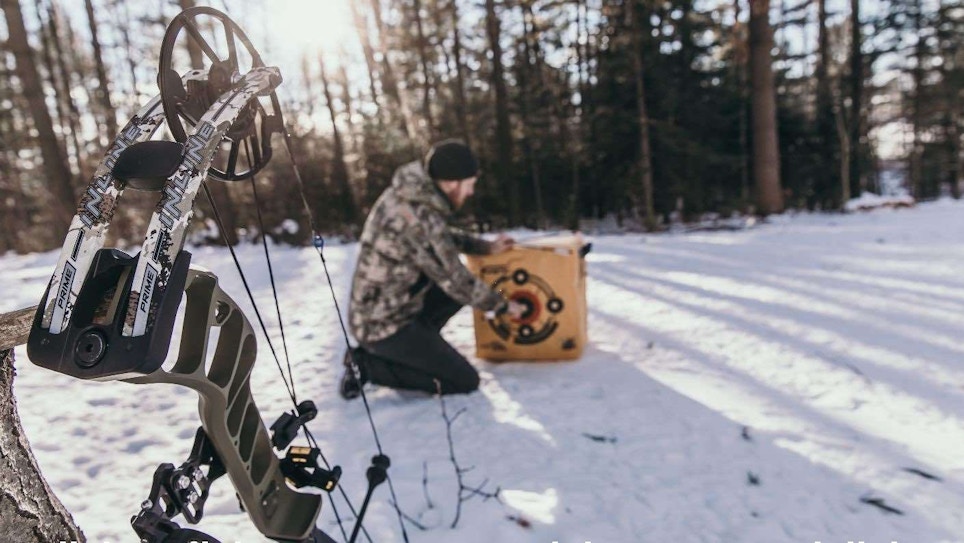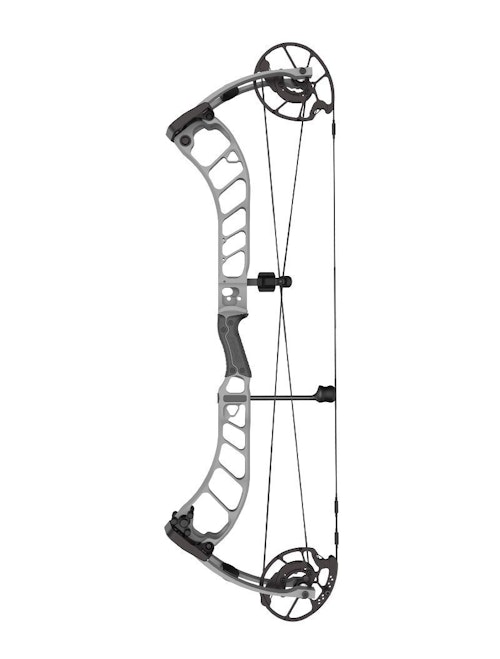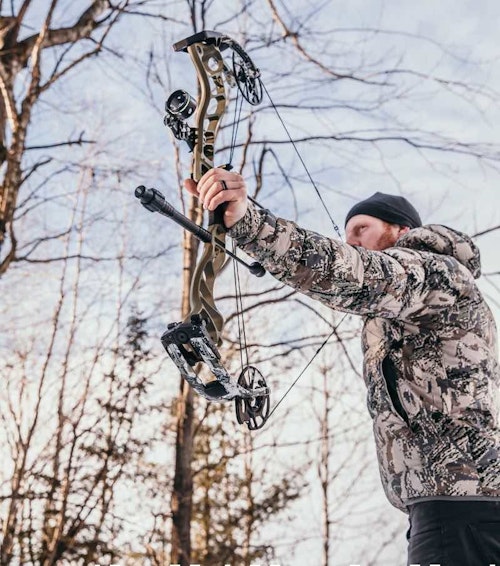With flagship bows costing more than $1,000, most consumers demand notable improvements that deliver a better shooting experience than what they currently have. Why else would they upgrade? The difficult part is that new bows — on the surface — oftentimes appear fairly similar in design. As a retailer, you must outline what the new advancements actually are and how they’ll improve your customer’s shooting experience.
Of course, if a new bow model is practically last year’s bow with a new name, then you’ll struggle to generate genuine selling points and convince a customer who purchased a new bow last year to buy one again this year. Fortunately, that won’t be an issue with Prime’s new Inline Series bows. They not only look different, but there’s also new technology that indeed delivers an even better shooting experience than past Prime models. That says a lot, because in all of my conversations over the years with industry folks and consumers alike, not once have I heard an ill remark about the brand or its bows.
How is the Prime Inline better than last year’s hit flagship, the Nexus? Well, you’ll immediately notice that the cams and the bowstring-and-cable system have been simplified and streamlined. This might alarm Parallel Cam fans initially, and understandably so, because the Parallel Cam was long the foundation that truly set Prime bows apart. It balanced and tuned phenomenally.
Worry not, for the Inline Cam exemplifies the phrase “less is more.” In other words, don’t confuse its simplicity as a reverse in technology. Quite the opposite — new Inline technology achieves the same positive cam balance and alignment without the bulk.
Test Bow Specs
- Axle to Axle Length: 33 inches
- Brace Height: 6.5 inches
- Draw Length: 28 inches
- Draw Weight: 70.92 pounds
- Let-off: 85%
- Bow-only Weight: 4.4 pounds
- Accessorized Total Weight: 5.72 pounds
- Velocity: 273 fps (with 468-grain Easton 6.5mm Acu-Carbon 340 arrow)
- Kinetic Energy: 77.44 foot-pounds
- Finish: Army Green (riser), King’s XK7 (limbs)
- MSRP: $1,199
- Contact: www.g5prime.com
Initial Impressions
Before I discuss the Inline Cam, let’s briefly walk down memory lane. Prime really captured my attention and undeniably changed cam balance with the Parallel Cam launched back in 2011. Again, it was designed to evenly distribute the bowstring and cable load in order to maintain cam alignment throughout the entire draw cycle. While bows featuring the Parallel Cam that I shot in the past such as the Prime Impact and Logic performed admirably, I’d always felt the Parallel Cam’s one downside is its bulk and the additional strings/parts it required. Fundamentally, the two-tracked cams added mass weight to the bow and were fairly complicated.
Prime engineers obviously felt the same way. So, they returned to the drawing board, and the product is the all-new Inline Cam System featured on all three bows in the Inline Series. Prime did away with the dual tracks and designed the Inline Cam to shift the cable force toward the center of the cam axle, resulting in impeccable cam balance without Parallel Cam bulk and weight. If you find it difficult to comprehend, Prime engineer Scott Prater breaks down the concept into easily understood terms complete with visual aids in a video on Prime’s website.
The Inline Cam is by no means set in stone from a tuning perspective. It drastically simplifies the tuning process, yes, but it doesn’t hinder you from getting technical. Cam spacers come preinstalled, but the Inline includes two additional sets so that you can move the cam left or right on the axle.
Comfort by Design
The older I get, the more I value a bow with a comfortable grip. Prime’s Inline 3 aces this category. The Nano Grip melds beautifully with my hand. A grip that requires extra focus before, during and after drawing is both annoying and distracting, but the Inline’s grip is a natural fit that lets me focus on other aspects of my shot process. Equally impressive, underneath the grip module is Aerogel developed by NASA. It serves as a barrier between the metal riser and the grip module so your bow hand doesn’t freeze in biting temperatures.
While I’m talking about comfort, I’ll add that the Inline Cam does more than balance the string and cable load. It also features a wonderful draw cycle — the flexible roller guard contributes to this, too — that lets off nicely and finishes with a positive wall at full draw. By the way, holding at full draw for long intervals is easy when needed; I don’t recall too many bows that allowed me to feel so relaxed at full draw the way the Inline 3 does. This brings me to the Inline’s aiming and stability aspects, which are so critical to a dynamite shooting experience.
Stability You Have to Feel to Believe
While wearing warm clothing and shooting the Inline 3 outdoors in wintery Wisconsin conditions, I immediately noted its stability was astounding. I was able to acquire my target very quickly and begin my shot-execution process faster than with most bows I’ve shot. Two technologies in particular contribute to this.
First, it’s the straight, almost deflexed riser. While many bow manufacturers are going all in on reflexed designs, Prime has stayed the course since the Logic with straighter risers, and you can just feel the stability while aiming.
Next up is Centergy Technology. It positions the grip in the center of the riser, and testing has shown that it substantially decreases pin movement while aiming compared to competing designs. I’ve believed Centergy Technology to be genius since its inception, and I can feel the difference anytime I take aim with a Prime bow.
Prime risers are not only constructed from durable top-shelf materials, but two integrated features increase their rigidity. First, the riser features a bridge at each end near the limb pocket. The second integration is the Swerve; it mitigates riser flexing at a critical point of the riser (beneath the grip). Meticulous testing and measuring have revealed that the riser doesn’t move at all during the draw cycle — a huge contributing factor in why Prime bows tune so easily.
Powerful Enough
The Inline doesn’t win any speed competitions, nor was it designed to. It’s designed to align with Prime’s slogan: “Most accurate bows on the planet.” If your customers are worried about accuracy, their worries end with the Inline 3. The Inline 3 proved to be a shooter outdoors under realistic hunting conditions. It sighted-in quickly, and my first group at 40 yards was smaller than a deer heart. Ditto at 50 yards. And despite it being designed for accuracy, the Inline 3 set to my specs delivers more than enough power for North America’s toughest game with 77.44 pounds of walloping kinetic energy.
Final Thoughts
Prime has added three new hunting finishes and two new target finishes this year, giving your customers even more to love. Beyond that, Prime bows are featured in highly followed, highly watched video content from the likes of Elk 101, MeatEater, Whitetail Edge and others. And with reputable hunters like these shooting Prime, it’s great promotion that puts the brand in front of many eyes, thus driving sales.
I could ramble on, but what it all comes down to is that customers expect notable technology advancements that deliver a better shooting experience than what they’re currently used to, especially when a flagship bow costs more than $1,000. And Prime’s Inline 3 does exactly that.
Additional Notes
The Inline 3 was set up using a Last Chance Archery EZ Green Bow Press and EZ Green Bow Vise, and draw weight was calculated using Last Chance Archery’s Digital Bow Scale. A Caldwell Ballistic Precision Chronograph measured the 468-grain Easton 6.5mm Acu-Carbon 340 arrow’s velocity.
In the field photos by Darron McDougal









